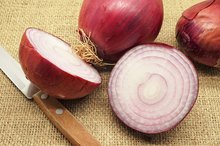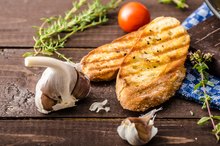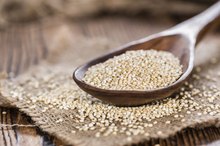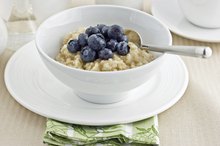How to Make a Bread Poultice
Bread poultice is beneficial in healing boils, skin infections and splinters. When applied to the skin like a compress the poultice will help pull toxins from the skin, which will speed up the recovery time. Bread poultice is soothing to the skin and can be made at home and applied as often as needed. Milk or water can be used to make the poultice.
Bring a Boil to a Head
Warm 2 to 3 tsp. of milk in a small pan over low heat. Remove the pan from the stove when the milk is just warm enough to be comfortably placed on the skin.
Old Folk Remedies for Boils
Learn More
Place a slice of bread in a bowl. Slowly pour the warm milk on top of the bread. Let the bread soften. Stir the bread and milk to make a paste 2.
Apply the paste to the boil and let it dry. Repeat this method twice a day until the boil ruptures.
- of milk in a small pan over low heat.
- Apply the paste to the boil and let it dry.
Remove Splinters
Allergy to Sourdough Bread
Learn More
Break up one slice of moldy bread into bite-size pieces and place in a small bowl. (Moldy bread is used because of its natural penicillin content.)
Fill the bowl with boiling water. Allow the bread to sit for a few minutes until the bread is mushy. Pour the mixture in a strainer to drain off any excess water that was not soaked up by the bread.
Use a rubber spatula to scrape the bread pieces back into the bowl.
Stir the bread until it forms a paste. Cover the splinter with the poultice and allow it to remain on the splinter as long as possible.
- Break up one slice of moldy bread into bite-size pieces and place in a small bowl.
- ( Pour the mixture in a strainer to drain off any excess water that was not soaked up by the bread.
Heal an Infection
Place a small pot of milk on the stove and heat until it reaches a temperature that can be comfortably put on the skin.
Remove the pot from the stove and place one piece of bread in the milk. Wrap the infected area with gauze.
Remove the bread from the pot, then place it on top of the gauze on the infected area. Wrap the location with another piece of gauze to keep the bread in place. Leave the bread on until it has completely cooled off.
Warnings
Do not use a poultice on an open wound.
For severe infections, conditions or open wounds, see a doctor immediately.
- Place a small pot of milk on the stove and heat until it reaches a temperature that can be comfortably put on the skin.
- Remove the bread from the pot, then place it on top of the gauze on the infected area.
Related Articles
References
- Grandma's Attic: 48. For Infection
- Stories and Stovies Hamely Fair - Bread
- Mofidi A, Ferraro ZM, Stewart KA, et al. The acute impact of ingestion of sourdough and whole-grain breads on blood glucose, insulin, and incretins in overweight and obese men. J Nutr Metab. 2012;2012:184710. doi:10.1155/2012/184710
- Title 21. Food And Drugs. Subchapter B Food For Human Consumption. U.S. Food And Drug Administration Department Of Health And Human Services. Updated April 1 2019
- Najjar, AM, Parsons, PM, et al. "The acute impact of ingestion of breads of varying composition on blood glucose, insulin and incretins following first and second meals." Human and Clinical Nutrition. Vol. 101, No. 3 391-398 (2009).
- Najjar, AM. "The Impact of Breads of Varying Composition on Biomarkers of Glucose Metabolism in Overweight and Obese Adults." University of Guelph, December 2009
- USDA National Nutrient Database for Standard Reference, Release 21.
Writer Bio
In 2010 Roxanne Whitehead started writing online professionally. She has over 12 years of telecommunications experience. She studied freelance writing and publishing through Stratford Career Institute and has a diploma in medical transcription.









